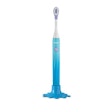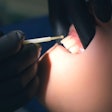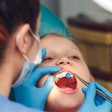A University of South Carolina study of children's dental health has found that nearly one-fourth of the nation's children have had no dental care in at least a year.
Conducted by researchers at the South Carolina Rural Health Research Center, the study found that nearly 32% of Hispanic children in rural areas had no dental care in the past year and 26% of rural black children had no dental care, followed by 23% of "other" children and 22% of white children. More than 47% of all children age 5 and younger had not seen a dentist in the previous year. Among rural children, the percentage was more than 48%. More than 33% of rural children had no dental insurance.
"Our nation has a group of children suffering dental disease severe enough to constitute a public health problem," said Dr. Amy Brock Martin, lead author of "Dental Health and Access to Care among Rural Children: A National and State Report."
Data for the report came from the 2003 National Survey of Children's Health, which used parents' reports to measure the health and well-being of children from birth to age 17. The survey asked parents in urban and rural areas about the condition of their children's teeth, utilization of dental care, and dental insurance coverage.
The University of South Carolina report looks at dental health from a national perspective and also provides state and regional analyses.
Among the report's other findings:
Hispanic children in rural and urban areas are the least likely to receive preventive dental care. Vermont led the nation in the percentage of its children receiving preventive dental care (84%); Florida, with nearly 61%, had the lowest.
Hispanic children in rural and urban areas were the least likely to have dental insurance. Hawaii, with nearly 89% of children having dental insurance, was No. 1. Montana had the lowest number (nearly 61%) of children with dental insurance.
Rural counties throughout the nation are likely to have dental health professional shortage areas (HPSAs), a federal designation. Of all rural counties, nearly 60% had a dental HPSA designation between 2000 and 2004. The areas with the greatest shortages are in Northwest and Southwest states, followed by those in the Midwest and Southeast.
More than 68% of U.S. parents consider their children's teeth to be in very good or excellent condition. Urban white, black, and Hispanic parents were more likely to describe their children's teeth as "excellent" than those in rural areas.


















